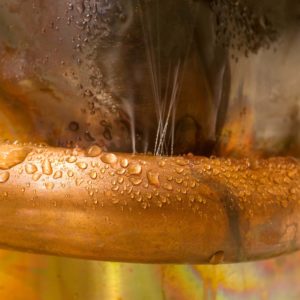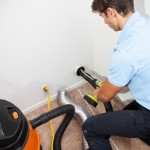 It’s never acceptable to allow carbon monoxide into a household, which is why a cracked heat exchanger has the potential to spell big trouble for any furnace. In fact, it’s an industry standard to immediately replace any furnace that shows cracks or holes in its heat exchanger. But how seriously is the problem really taken by homeowners?
It’s never acceptable to allow carbon monoxide into a household, which is why a cracked heat exchanger has the potential to spell big trouble for any furnace. In fact, it’s an industry standard to immediately replace any furnace that shows cracks or holes in its heat exchanger. But how seriously is the problem really taken by homeowners?
There are a lot of misconceptions surrounding the dangers that cracked heat exchangers can pose. If your customer is skeptical or looking to brush-up on the nitty gritty details, here’s a look at everything you need to tell them, including how to effectively check for cracks and holes.
Cracked heat exchangers are more common than you think
Back before scope cameras and combustion analyzers, the only way to really check for cracks and holes in a heat exchanger was to perform an exterior visual inspection. This was a rather hit or miss method, and far from perfect. Not surprisingly, cracked heat exchangers were underreported.
Today, cracked heat exchangers are identified far more often, leading some customers to believe the diagnosis is a way for HVAC contractors to drum up more business. In fact, cracked heat exchangers are quite common and a sign of normal wear and tear in any furnace.
Cracked heat exchangers don’t always leak CO
The big misconception about cracked heat exchangers is that they all leak carbon monoxide. In fact, some cracked heat exchangers won’t leak any carbon monoxide. This has added fuel to the skeptic’s fire: If my cracked heat exchanger isn’t leaking CO, why are you telling me to replace it?
The fact is, cracked heat exchangers have the potential to leak high levels of carbon monoxide. In some municipalities, it’s actually a code violation to not replace furnaces with cracked heat exchangers, whether they’re leaking CO or not.
How to effectively check for cracks in a heat exchanger
Visual inspections, either inside or outside the furnace, only yield so much information. In many cases, visual inspections won’t actually reveal any cracks, even if there are any. So, how do you check for cracks and have confidence in your assessment?
The most effective way to perform a combustion analysis using a combustion analyzer. This allows a technician to test the furnace under normal operation and determine the severity of any leaks. The combustion analyzer measures the presence in parts-per-million (ppm) of CO in the furnace’s flue. Modern gas-burning furnaces will typically have CO levels of less than 50ppm. When a furnace has a severely cracked heat exchanger, that number can skyrocket upto 2000ppm.



